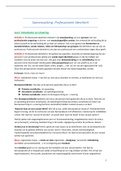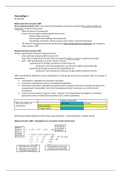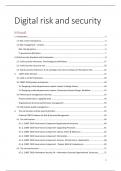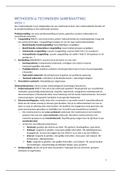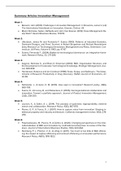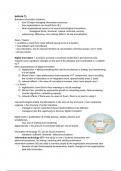ERGONOMICS FOR ENGINEERS
CHAPTER 1: GUIDED TOUR OF ERGONOMIC DESIGN
INTRODUCTION
It is important to improve both the effectiveness of people in industry and the products and services that
industry sells. Ergonomics is the study of people at work. This is later called “human factors” in the US.
Paul Fitts described human performance as a function of five factors (labelled by the acronym, LIMET), which
were
- Learning (the objective of training)
- Individual differences (underlie justification for developing personnel selection procedures)
- Motivation (in order to perform well)
- Environment (should be safe, effective, and conducive to good work)
- Task
Whatever the end-product, the activity known as design involves planning, problem solving, formulating a
method or plan, artistically and/or skilfully describing that end product on paper or on a computer, and devising
a model of the product for illustration and testing.
WHAT IS ERGONOMIC DESIGN
Ergonomists study people and how they operate equipment in the home, in commerce, in factories, and in
governmental activities. They design methods and tools for performing tasks. Chapanis (1995) identified a
number of activities that might occur during the ergonomic design of products and jobs. These are: Analysis of
similar systems, Activity analysis, Critical incident study, Functional flow, Decision/action analysis,
Action/information requirements analysis, Functional analysis, Task analysis, Failure mode and effects analysis,
Timeline analysis, Simulation, Link analysis, Controlled experimentation, Operations sequence analysis,
Workload assessment.
Three activities that can be performed concurrently at the beginning of the design process are analysis of similar
systems, activity analysis, and critical incident study. The analysis of similar systems establishes a background
for making improvements where possible. The principal purpose of this analysis is to assemble a full background
history from which the designers can work.
Activity analysis or sampling involves determining what tasks are performed and how much time is spent on
each task. With this information, ergonomic engineers can improve products and processes by making the more
frequently performed tasks easier, in some cases at the expense of activities that occur infrequently. The results
of activity sampling can help designers verify personnel requirements, in terms of how many people are
required, at particular skill levels, to perform a job.
Critical incident study or analysis entails interviewing people who have worked with existing systems or products
to discover problems.
Functional flow study and decision/action analysis are the next steps shown in Chapanis’s list of activities.
Functional flow study consists of breaking the operations down into component actions and identifying one or
more sequences of actions that must be performed to properly operate the product. Identifying the required
activities and their precedence relationships is part of this procedure. Decision/action analysis is a
,complementary procedure that documents the sequence of decisions and actions required in a complete
application of the product.
Action/information requirements analysis provides a more detailed view of what information is needed to
make the necessary decisions and perform the required actions. Particular focus is placed on documenting what
information is needed in order to know which action should be taken.
Function allocation is the next stage in Chapanis’ view of product design. A function, from this perspective,
refers to an operation or activity that can be performed by either a person or a machine. The goal at this stage
is to determine who or what performs each function.
Task analysis is an important component of the ergonomic design process performed to ensure that the
aforementioned objective is attained. Task analysis involves documenting tasks and task sequences, time
requirements, information requirements, and the skills, knowledge, and abilities needed to perform the tasks.
Operational sequence analysis and workload assessment are the final two elements of Chapanis’ perspective.
The focus here is on what happens after the product is sold and put into use.
HUMAN-CENTERED DESIGN
While the term human-centered implies a focus on people using the design, it also includes people who are
responsible for the system being designed.
Principle 1.1: Select people to fit their machines and jobs.
This principle really means that at times ergonomics specialists need to choose people for particular jobs
because of individual differences in knowledge, abilities, and skills.
Principle 1.2: Take advantage of human attributes by expanding requirements for human abilities so that people
can better perform their roles.
More simply stated, too much focus on human limitations may cause you to miss opportunities to improve the
system.
Principle 1.3: Overcome human limitations so that those limitations do not become system limitations.
Principle 1.4: Be sure that the problem identified is the right problem and that it is formulated correctly.
Principle 1.5: Consider the activities of interest as to whether or not people are required to exercise significant
levels of skill, judgment, and/or creativity.
Generally, the lower the requirements for human skill, judgment, or creativity are, the more the designers ought
to consider automating the activity.
Principle 1.6: Find out the degree to which people enjoy being involved with these activities.
Principle 1.7: Query human operators about their dissatisfaction to see if it is caused by (a) a need to “feel in
control,” (b) a desire for achieving self-satisfaction in task performance, or, (c) perceptions of inadequacies of
technology for quality of performance, or ease of use.
Principle 1.8: To the extent possible, only change the system functions that personnel in the existing system feel
should be changed.
Principle 1.9: Consider increasing the level and number of activities for which personnel are responsible so that
they will be willing to change the functions of concern.
, Principle 1.10: Be sure that the level and number of activities (tasks) allocated to each person or team forms a
coherent set of activities and responsibilities, with an overall level that is consistent with the abilities and
inclinations of the personnel.
Principle 1.11: Avoid changing activities when the anticipated level of performance is likely to result in regular
intervention on the part of the personnel involved.
Principle 1.12: Assure that all personnel involved are aware of the goals of the design and know what their roles
will be after the change.
Principle 1.13: Provide training that assists personnel in gaining any newly required abilities to exercise skill,
judgment, and/or creativity and help them to internalize the personal value of these abilities.
Principle 1.14: Involve personnel in planning and implementing the changes from both a system-wide and
individual perspective, with particular emphasis on making the implementation process minimally disruptive.
Principle 1.15: Assure that personnel understand both the abilities and limitations of the new technology, know
how to monitor and intervene appropriately, and retain clear feelings of responsibility for system operations.
After designing a solution to the formulated problem, designers need to refine and improve the initial solution
toward an optimum. Two obvious concerns about the solution are whether the system works and whether it
works as planned. Another issue on which designers need assurance is viability. That is, the benefits of the
solution must be sufficiently greater than the costs, or management will not accept the design.
ERGONOMIC CRITERIA
Ergonomic criteria are used to judge problem solutions and alternative designs. One long-used criterion is speed
or performance time. Speed is important to measurement of productivity, and it is almost everything in the
design of sports products. However, speed is unimportant unless other important criteria are satisfied. One such
criterion is accuracy. Speed and accuracy are often inversely related. In ergonomics, this relationship is known
as the speed–accuracy trade-off. Another aspect of performance time is time variability. Since no one performs
a task exactly the same way on every occasion, time variance occurs within each person.


